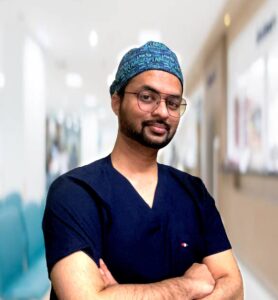-
Hair Transplantation
Hair Transplantation: Understanding FUE and FUT Techniques
Hair loss can be a challenging experience for many, affecting self-esteem and confidence. Fortunately, advancements in medical technology have led to effective solutions like hair transplantation. Among the most popular methods are Follicular Unit Extraction (FUE) and Follicular Unit Transplantation (FUT).
This article will explore both techniques, their differences, benefits, potential risks, and answer some frequently asked questions to help you make an informed decision.
What is Transplantation
Hair transplantation is a surgical procedure that involves moving hair follicles from a donor site (usually the back or sides of the scalp) to areas experiencing thinning or baldness.
The primary goal is to restore a natural-looking hairline and density. Both FUE and FUT are effective methods for achieving this, but they differ significantly in technique.
Understanding Follicular Unit Transplantation (FUT)
FUT, also known as the strip method, involves removing a strip of skin from the donor area. Here’s how it works:
- Preparation: The surgeon administers local anesthesia to numb the donor area.
- Strip Removal: A strip of scalp containing healthy hair follicles is surgically removed.
- Dissection: The strip is then dissected into individual follicular units under a microscope.
- Transplantation: The prepared grafts are transplanted into the recipient area where hair loss has occurred.
Advantages of FUT:
- Higher Graft Yield: FUT allows for the extraction of a larger number of grafts in one session, making it suitable for patients with extensive hair loss.
- Less Time-Consuming: Since multiple grafts are harvested at once, the overall procedure may take less time than FUE.
Disadvantages of FUT:
- Linear Scar: The removal of a strip leaves a linear scar at the donor site, which may be visible if the hair is worn short.
- Longer Recovery Time: Patients may experience more discomfort post-surgery compared to FUE due to the nature of the incision.
Understanding Follicular Unit Extraction (FUE)
FUE is a more modern technique that involves extracting individual hair follicles directly from the scalp. Here’s how it works:
- Preparation: Similar to FUT, local anesthesia is administered to numb the donor site.
- Follicle Extraction: Using a specialized punch tool, individual follicular units are extracted one by one from the donor area.
- Transplantation: The harvested follicles are then implanted into the balding areas.
Advantages of FUE:
- Minimal Scarring: FUE leaves tiny dot-like scars instead of a linear scar, making it less noticeable even with short hairstyles.
- Quicker Recovery: Patients often experience less discomfort and can return to normal activities sooner than with FUT.
Disadvantages of FUE:
- Higher Cost: FUE is generally more expensive due to its labor-intensive nature and advanced technology used during extraction.
- Limited Graft Availability: Because follicles are extracted individually, there may be limitations on the number of grafts that can be harvested in one session.
Comparing FUE and FUT
Feature | Follicular Unit Transplantation (FUT) | Follicular Unit Extraction (FUE) |
Technique | Strip removal from donor area | Individual follicle extraction |
Scarring | Linear scar | Tiny dot-like scars |
Recovery Time | Longer recovery | Quicker recovery |
Graft Yield | Higher number of grafts in one session | Limited grafts per session |
Cost | Generally lower | Generally higher |
Who is a Good Candidate for Hair Transplantation?
Both FUE and FUT can be suitable for men and women experiencing various types of hair loss, including androgenetic alopecia (pattern baldness), traction alopecia, and other forms of thinning hair. Ideal candidates typically have:
- Sufficient donor hair available
- Realistic expectations about results
- Overall good health
A consultation with a qualified surgeon can help determine which method is best suited for your specific needs.
Potential Risks and Side Effects
While both techniques are generally safe when performed by experienced professionals, potential risks include:
- Infection: As with any surgical procedure, there’s a risk of infection at the donor or recipient sites.
- Scarring: While FUE leaves minimal scarring, some patients may still experience noticeable scars depending on their healing process.
- Uneven Hair Growth: In some cases, transplanted hair may not grow as expected or may fall out temporarily before regrowing.
- Pain or Discomfort: Patients may experience pain or discomfort post-surgery; however, this can typically be managed with medication.
Frequently Asked Questions (FAQs)
The duration varies based on the number of grafts being transplanted but typically ranges from 4 to 8 hours for both FUE and FUT procedures.
Most patients begin to see new hair growth within 3 to 6 months after surgery, with full results visible after about 12 months.
While many patients return to normal activities within a few days, it’s advisable to avoid strenuous exercise for at least two weeks post-surgery
Patients who undergo FUT should be cautious about wearing their hair too short until the scar has healed sufficiently; longer hairstyles can help conceal any scarring.
Yes! Hair follicles transplanted during either procedure are typically resistant to balding and should continue to grow for years.
The choice between FUE and FUT depends on several factors including your specific hair loss pattern, budget, desired recovery time, and personal preferences regarding scarring. Consulting with an experienced surgeon can help guide your decision.
Conclusion
Hair transplantation through FUE and FUT techniques offers effective solutions for those struggling with hair loss. Both methods have their unique advantages and disadvantages but can provide natural-looking results when performed by skilled professionals. Understanding these options empowers individuals to make informed decisions about their hair restoration journey.
If you’re considering a hair transplant, consult with a qualified surgeon who specializes in these techniques to discuss your options and develop a personalized treatment plan tailored to your needs. With advancements in technology and techniques, achieving fuller hair has never been more accessible!

Dr. Akash, is a well trained Cosmetic Plastic surgeon in Breast surgery techniques. He has worked with top cosmetic surgeons in India and implements the gained knowledge into defining the art of cosmetic surgery to treat his patients and give them a naturally curved and contoured Breasts that they desire.
We, at Sculpt Derma, are committed to provide customized and transparent facial rejuvenation services. For any queries or booking an appointment click the button, we will get back to you soon.

Dr. Somnath stands at the forefront of breast aesthetic surgery as an expert Cosmetic Plastic surgeon. His exceptional training and hands-on experience alongside renowned surgeons across India have refined his precision in cosmetic procedures. Combining artistic vision with surgical excellence, he specializes in creating harmonious, natural-looking breast transformations tailored to each patient’s unique desires.
At Sculpt Derma, transparency and personalization are the cornerstones of our facial rejuvenation services. For appointments or inquiries, click the button below, and our team will promptly assist you.
